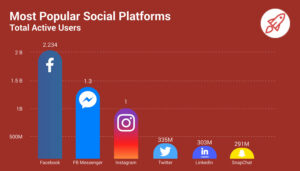Recruitment Messaging: Crafting Your Most Successful Call for Volunteers Yet!
Compelling messaging is essential when your organization is ready to call for volunteers. You want to attract the right people, who are excited about working in support of your program or good cause.
Often, the candidates you’re wanting to recruit are busy people, which makes catching and holding their attention long enough to make your pitch a challenge. Plus, there are a lot of other messages vying for their attention.
Luckily, the anatomy of a recruitment message is pretty basic. Once you’ve gathered all the necessary tools, composition shouldn’t take too much time. At its core, a call for volunteers is made up of these five things:
- Offer or Opportunity – a short and catchy overview of what the volunteer will be asked to do.
- Benefits to the Individual and the Cause – what value the activity has to the organization and the volunteer.
- Requirements – a short list of minimum skills are required as well as any specific details that apply to the role (for example, ability to use a computer)
- Perks for Overcoming Barriers – short lists that convert folks who are in the fence about joining, such as flexible hours, training to be provided, i.e., if transportation is provided.
- Call to Action (CTA) – presenting the who, what, when, where and how of next steps the candidate should take
Simple enough, right? So, we’re done?
The product is often deceptively simple. Creating just the right message that compels your desired candidates to take action, however, takes a considerable amount of groundwork. You likely have a lot of it done or can access the information from teammates. The trick lies in putting it all together.
So, let’s begin!
The Foundation for a Compelling Call for Volunteers
Below are a few items to have on hand before you begin to write your post. It will help you complete it more quickly when you don’t have to hunt and peck for information. In addition, you can re-purpose the information over and over again across your posting platforms, website, and social media.
A Detailed Position Description
If you haven’t done so already, it’s strongly suggested that you have a well-crafted volunteer position description prepared before making a call for volunteers.
Writing a thoughtful and complete position description will inform your recruitment message and give you a good idea of the kind of audience you’ll want to pitch to, by thinking through who might be most likely to be attracted to this role.
You can learn more about writing a position description in this Volunteerpro blog post. The more purposeful and specific your position description, the more clarity you can enjoy when composing a call for volunteers. You can also link the full position description from your shorter post. So, set your program up right with detailed position descriptions.
Who Is the Right Audience for This Role?
Once you have a top-notch position description, you’ll want to decide which single driving factor will be most compelling to your ideal volunteer candidate.
Each individual has motivations for why they will contribute to your cause. For some, it is a desire to live their values and contribute to their community, others may be seeking to develop skills that will enhance their career prospects. You can find the compelling factor by solving this Thesis Formula for your volunteer offer:
Formula:
Any [type of volunteer you seek] can [solve the community issue] by volunteering for your cause because [how it solves the issue].
Example:
“Anyone who cares about our neighborhood health can help keep it clean and green by volunteering for the West Town Greenway — we will show them how to educate kids on easy ways to reduce pollution.”
Formulating your Thesis gives you a solid foundation for building an effective call for volunteers. You can base the ad or posting around the emotional appeal of the problem that’s solved and the outcomes.
Where Is Your Audience for This Role?
The form that your call for volunteers takes, whether it’s an email campaign, social media posts or via your newsletter, depends on the audience in which you’re most likely to find your ideal candidate.
For more general, short-term tasks, you can paint with the broadest brush to find applicants. This can be in something like craigslist or through corporate partners with employee volunteer programs.
The more specific the task or lengthy the commitment, you’ll be better off recruiting from within the circle of those who have already demonstrated interest in your good cause. In addition to reaching out via public posting sites like VolunteerMatch or Idealist, you’ll want to target subscribers to your newsletter and supporters for whom you already have contact information, whether that’s email or an SMS messaging system.
Investigate before you start writing. Knowing the platform for your message, and what information they require. will let you know how much space you have. This will also inform what type of visual you can include and whether you have a character limit.
Use the Voice and Platform That Suits Your Ideal Candidate
To be sure you reach just the right person with the right messaging, focus once again on the ideal candidate’s motivations and what personality traits will be the best fit.
If the task they’re to perform takes salesmanship, you might attract them with language like, “We’re putting together a team of go-getters who have what it takes to make this the largest/best/biggest XYZ our community has seen, yet!”
Whereas the same approach would not be attractive if the offer is better suited to a nurturing caregiver. In that instance, you’ll be more successful asking for, “Patient yet persistent role model requested to share quality time with seniors.”
It should be stated, too, if your opportunity is on-site, that you’d be seeking volunteers who are within a certain geographical region.
If the role requires visiting rural farms periodically, you’re going to want candidates who can drive. A virtual volunteer position is most likely going to find its audience online. All of these details can help determine who is, and how to reach, your ideal applicant.
Composing Your Call for Volunteers
You’re now ready to take your offer and distill it into a brief summary. Along with it, you’ll want to layer in the benefit, using factors from the Thesis you developed. You will briefly address any significant barriers to participation. Then wrap up your message with a powerful call to action.
Stop Them in Their Tracks
Bearing in mind all the groundwork you’ve established: the position; the ideal volunteer who would fill it; and the platform on which your message will be conveyed, you should have a few ideas for enticing key words or a scroll-stopping graphic that can capture the attention of your target audience. With all of the ads and offers clamoring for attention, your message needs to catch the eye, heart, or imagination of your prospective volunteer right away.
This article shares a few examples of catchy introductory lines as well as creating creative job titles that beg to be read. You already know enough about the job and the ideal candidate to know what approach will work best at capturing their attention.
Call Them for Something Specific
In your call for volunteers, you want to be as specific as possible without going into monotonous detail. Remember that you’re just appealing to prospects at this time and all the details can be shared once they’ve shown interest by taking the action you request. There will be time to hammer out logistics and quantities once you have their attention with your emotional plea.
Rather than “Your help is needed,” try “Will you brighten the day of a senior by sharing lunch and conversation once a week?”
Address Main Concerns
The applicants for your volunteer position may have questions about how the role will play out for them. Hopefully, the full job description covers most of them.
Don’t try to overcome all possible objections in your call for volunteers. But do hit any subjects that may be glaring obstacles.
In the example above, asking for lunch companions, the first few questions a prospective applicant might ask themselves are: Do I provide the lunch? Will I be obligated to taking the companion out somewhere each week?
You can succinctly overcome these potential obstacles by including information in your recruitment messaging such as: “feel free to bring your bagged lunch or reserve one made from our kitchen and enjoy spending time in our dining hall, recreation room, or the courtyard of Senior Village, as you get to know each other.”
Call Them to Action
It is so important to give specific instruction on next steps to take right away. If the audience for your call for volunteers is already familiar with your organization and has been involved in other ways, your CTA can appear in the first line or two of your message. For other audiences, it may be better placed at the conclusion of your emotional appeal.
Regardless, you will, again, want to be specific. Let them know if they should “call” or “click” or “read more here”. Optimally, you should let them know what will happen after the call or click.
In your CTA, you are already building a relationship with a prospective applicant. Start it off with a warm welcome. Invite them to “Click Here” and include “to be taken to a 3-minute online application”, or “Call 555-5555 between 8 – 5 and speak with Angie or Burl for more details”. This counters a good bit of apprehension and clarifies expectations, which builds trust.
Building on Your Successful Call for Volunteers
The most meticulously crafted call for volunteers will still be more successful when supported by solid recruitment strategies. Consistent communication throughout the process is key.
In traditional hiring, HR professionals recommend keeping your pipeline of talent full all of the time. The same applies in recruiting volunteers. Invite potential prospects to ‘Join the Waitlist!” or “Request an Invitation!” for the next volunteer orientation or training.
With their contact information, you can be nurturing warm prospects continually by sending email series that helps build anticipation and the relationship. Sprinkling in nuggets of organizational knowledge and culture will ease their transition to actively supporting your work when the time comes.
Social Sharing – Both Online & In-person
Enthusiastic current supporters can be very effective in spreading the word about volunteer needs. They may not always be thinking about recruiting for you, so remind them periodically, and specifically when you’re actively recruiting.
Word-of-mouth is the most powerful – and least costly – advertising you can get. Volunteers can be your greatest advocates and are likely to have a network of like-minded friends and colleagues from which you can build an even stronger team.
Keep prospects engaged via appropriate communication channels so they’ll be raring to go when you’re ready. Remember that your ideal candidate is probably a busy person with lots of choices for how and where to give their time and talents. By keeping in contact, sharing information, and nurturing their interest, you not only build yourself a strong pipeline, you improve the chances of the volunteer’s success.
Next Steps: Ready to Advance Your Recruitment Results Even More?
Check out our free eCourse Better Volunteer Recruitment in 6 Easy Steps.
Learn to attract the right people for the right jobs with this training delivered straight to your inbox, in six simple lessons.
Finish more ready than ever that to find qualified volunteers who truly want to make a difference.










